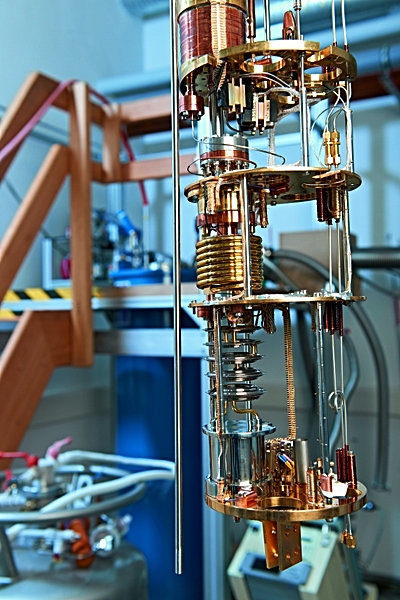Water that simply will not freeze, no matter how cold it gets — a research group involving the Helmholtz-Zentrum Dresden-Rossendorf (HZDR) has discovered a quantum state that could be described in this way. Experts from the Institute of Solid State Physics at the University of Tokyo in Japan, Johns Hopkins University in the United States, and the Max Planck Institute for the Physics of Complex Systems (MPI-PKS) in Dresden, Germany, managed to cool a special material to near absolute zero temperature.
They found that a central property of atoms — their alignment — did not “freeze,” as usual, but remained in a “liquid” state. The new quantum material could serve as a model system to develop novel, highly sensitive quantum sensors.
On first sight, quantum materials do not look different from normal substances — but they sure do their own thing: Inside, the electrons interact with unusual intensity, both with each other and with the atoms of the crystal lattice. This intimate interaction results in powerful quantum effects that not only act on the microscopic, but also on the macroscopic scale. Thanks to these effects, quantum materials exhibit remarkable properties. For example, they can conduct electricity completely loss-free at low temperatures. Often, even slight changes in temperature, pressure, or electrical voltage are enough to drastically change the behavior of the material.
In principle, magnets can also be regarded as quantum materials; after all, magnetism is based on the intrinsic spin of the electrons in the material.
The international team intended to create a quantum state in which the atomic alignment that is associated with the spins did not order, even at ultracold temperatures — similar to a liquid that will not solidify, even in extreme cold. To achieve this state, the research group used a special material — a compound of the elements, praseodymium, zirconium, and oxygen. They assumed that in this material, the properties of the crystal lattice would enable the electron spins to interact with their orbitals around the atoms in a special way.
It took several attempts, but eventually the team was able to produce crystals pure enough for their experiment: In a cryostat, a kind of super thermos flask, the experts gradually cooled their sample down to 20 millikelvin — just one fiftieth of a degree above absolute zero. To see how the sample responded to this cooling process and inside the magnetic field, they measured how much it changed in length. In another experiment, the group recorded how the crystal reacted to ultrasound waves being directly sent through it.
The team has presented its findings in the journal Nature Physics.
Reference : Nan Tang, Yulia Gritsenko, Kenta Kimura, Subhro Bhattacharjee, Akito Sakai, Mingxuan Fu, Hikaru Takeda, Huiyuan Man, Kento Sugawara, Yosuke Matsumoto, Yasuyuki Shimura, Jiajia Wen, Collin Broholm, Hiroshi Sawa, Masashi Takigawa, Toshiro Sakakibara, Sergei Zherlitsyn, Joachim Wosnitza, Roderich Moessner, Satoru Nakatsuji. Spin–orbital liquid state and liquid–gas metamagnetic transition on a pyrochlore lattice. Nature Physics, 2022; DOI: 10.1038/s41567-022-01816-4


